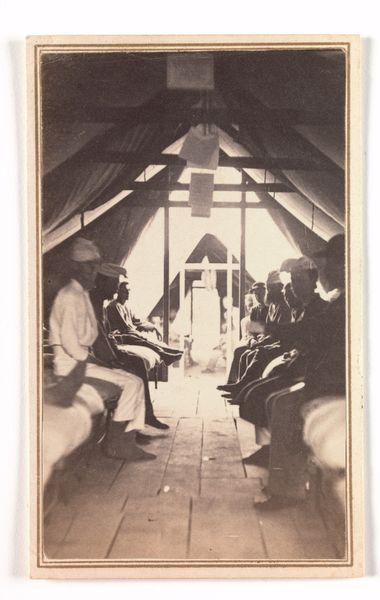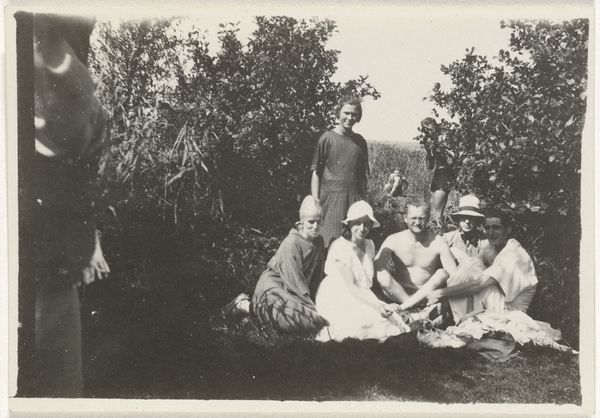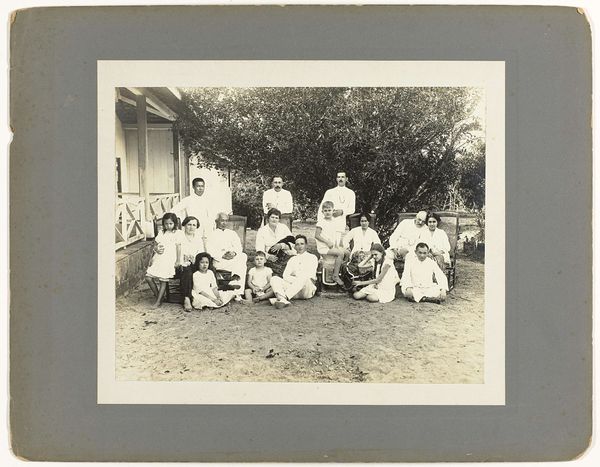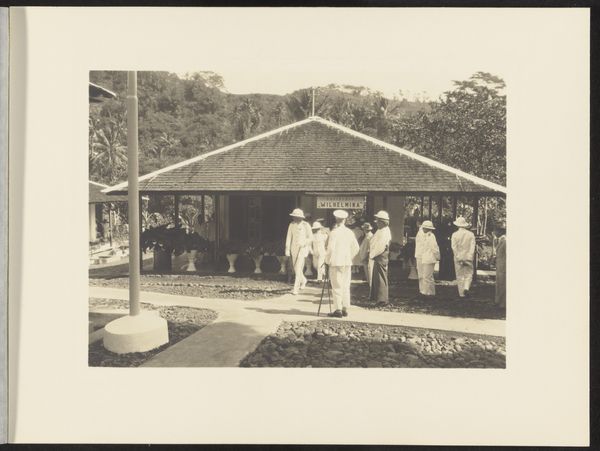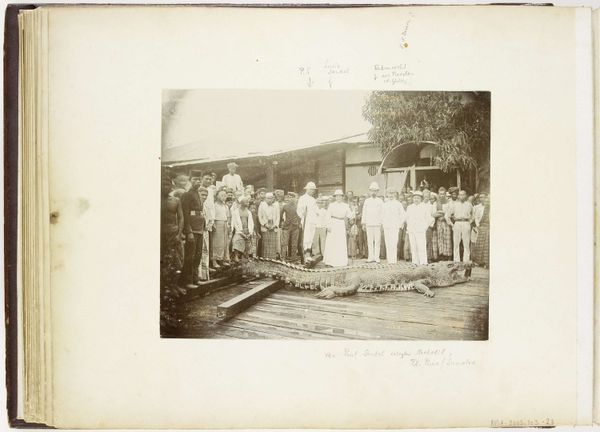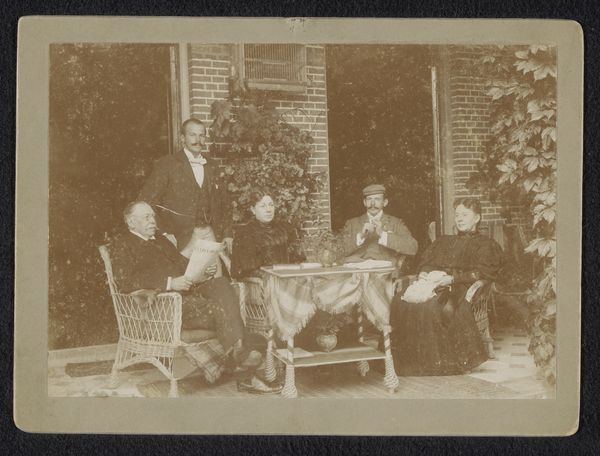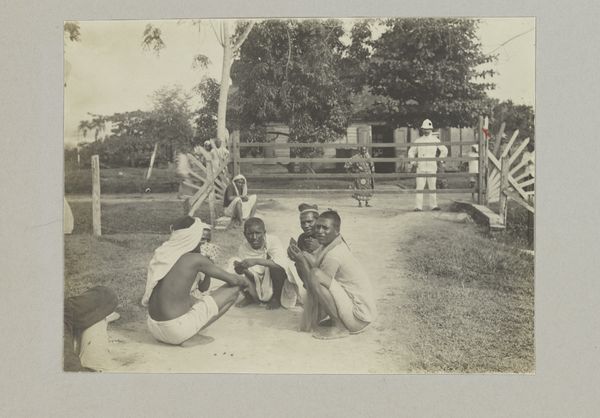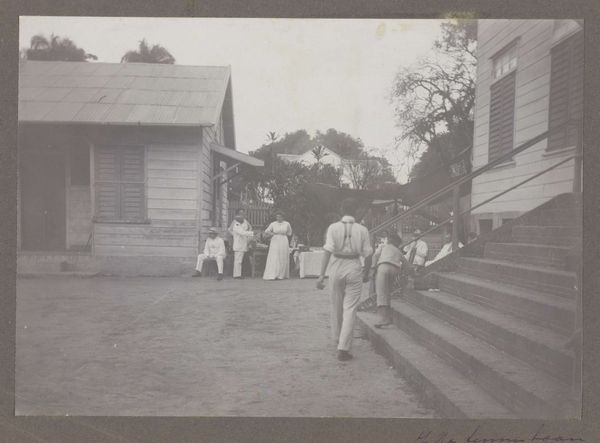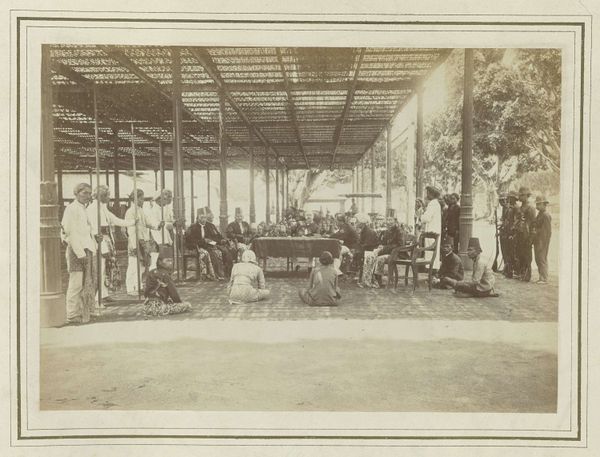
photography, gelatin-silver-print
#
portrait
#
print photography
#
photography
#
historical photography
#
group-portraits
#
gelatin-silver-print
#
genre-painting
Dimensions: sheet (trimmed to image): 15.1 x 18.9 cm (5 15/16 x 7 7/16 in.) mount: 16 x 19.6 cm (6 5/16 x 7 11/16 in.)
Copyright: National Gallery of Art: CC0 1.0
Curator: Today, we're looking at a gelatin-silver print entitled "A Good Story," created in 1913 by Gertrude L. Brown. What's your initial read? Editor: This scene whispers of a bygone era. The sepia tones lend a melancholy feel. It looks posed yet also captures a genuine moment of connection among the group of people on the porch. Curator: Note how Brown uses the porch structure itself—those strong verticals of the support beams—to create a kind of visual rhythm and contain the composition. It guides the eye around the scene. Editor: It does, but it also highlights the separation between those gathered inside the porch and the environment just beyond, implying a socio-economic contrast with those on the outside. What are they talking about? Who holds power in this scenario? The gaze of each person suggests much that we will never truly know. Curator: Undoubtedly, but consider how the differing levels of focus shape our interpretation. The figures on the porch, sharply rendered, become the focal point. Conversely, the slightly blurred landscape pulls away. This formal tension between clarity and diffusion creates an atmospheric depth. Editor: I am also noticing the dress and uniforms of the people who are posed together here; they are coded signifiers that hint at gender and social position. Notice that it seems some are laborers while others are clearly privileged members of society. "A Good Story" suggests that some stories get told at the expense of others. The very composition here reproduces unequal hierarchies, no? Curator: An intriguing suggestion. While these social dynamics are a reasonable point of reflection, let us not diminish how Brown uses tonal variations – moving from light, almost bleached whites to the deepest shadows – to activate a relatively limited palette. That control shapes the eye. Editor: Of course, but art can simultaneously embrace technical sophistication while still reflecting prevailing social relations. I think Brown may be unaware of how powerfully her work may reveal such issues to the present day viewer. Curator: A fruitful paradox indeed, prompting us to consider these figures both as aesthetic elements and as potential participants in the broader socio-historical dramas of their time. Editor: Indeed. And reflecting on Brown's composition makes one think about which contemporary dynamics our images may unwittingly preserve, too.
Comments
No comments
Be the first to comment and join the conversation on the ultimate creative platform.

